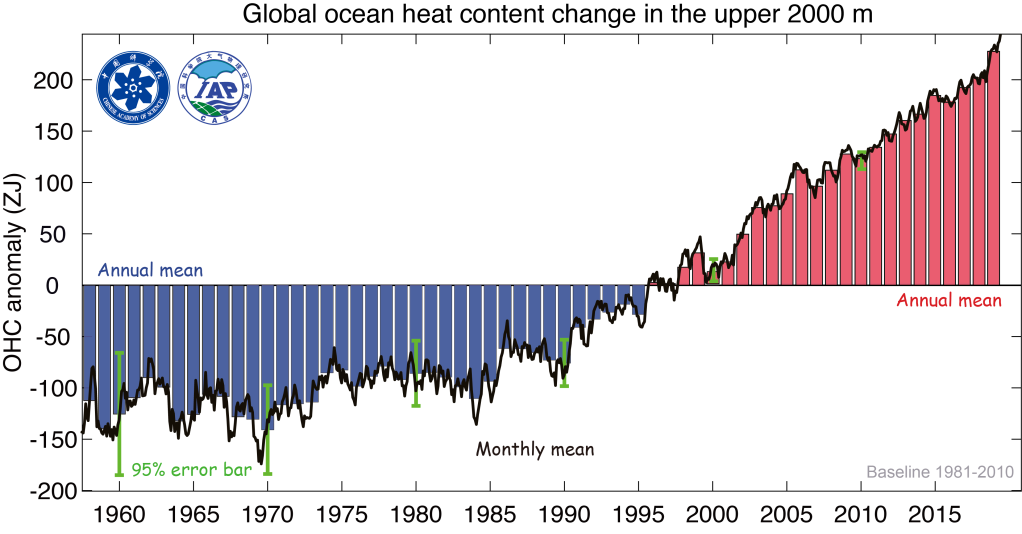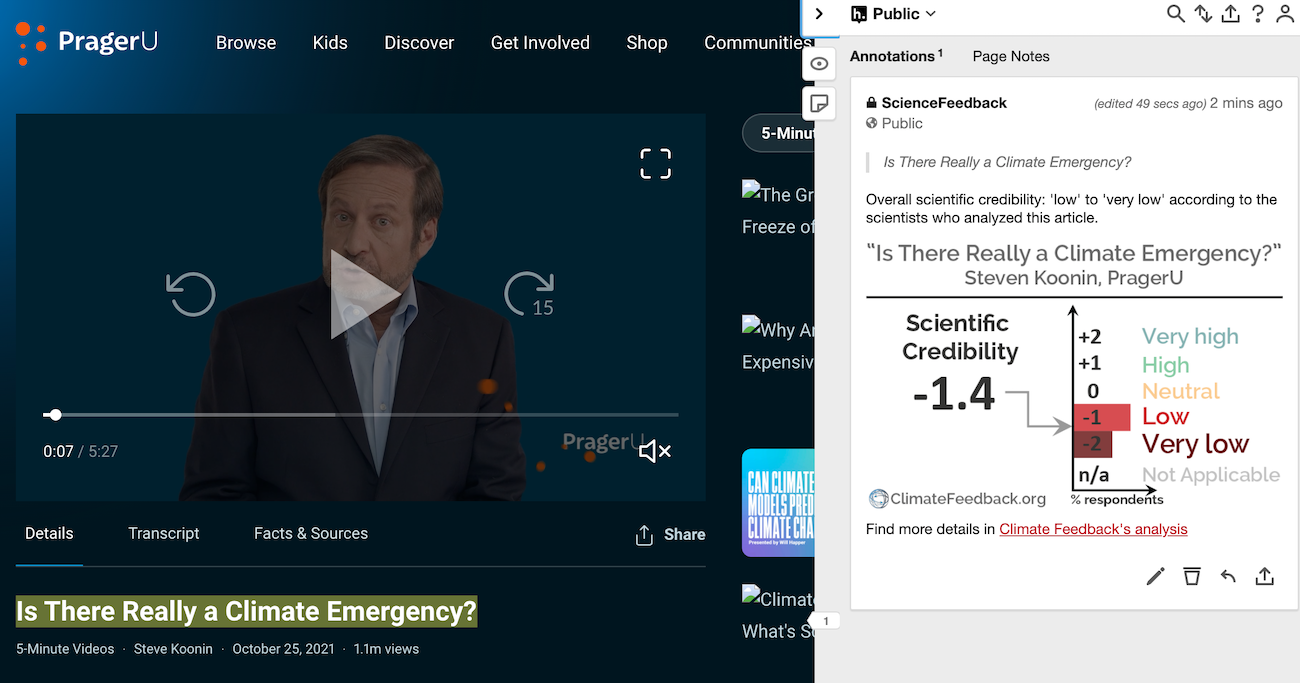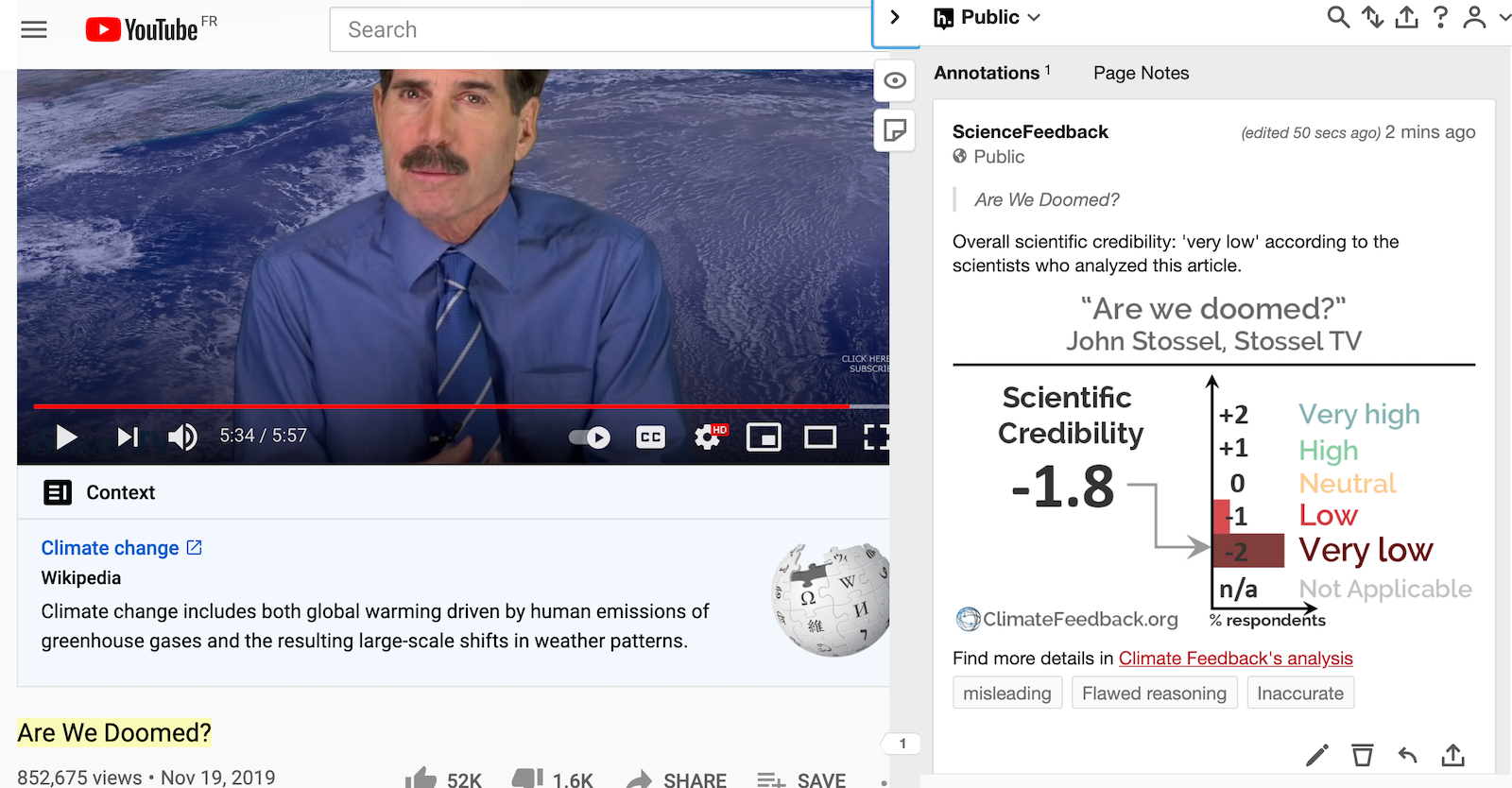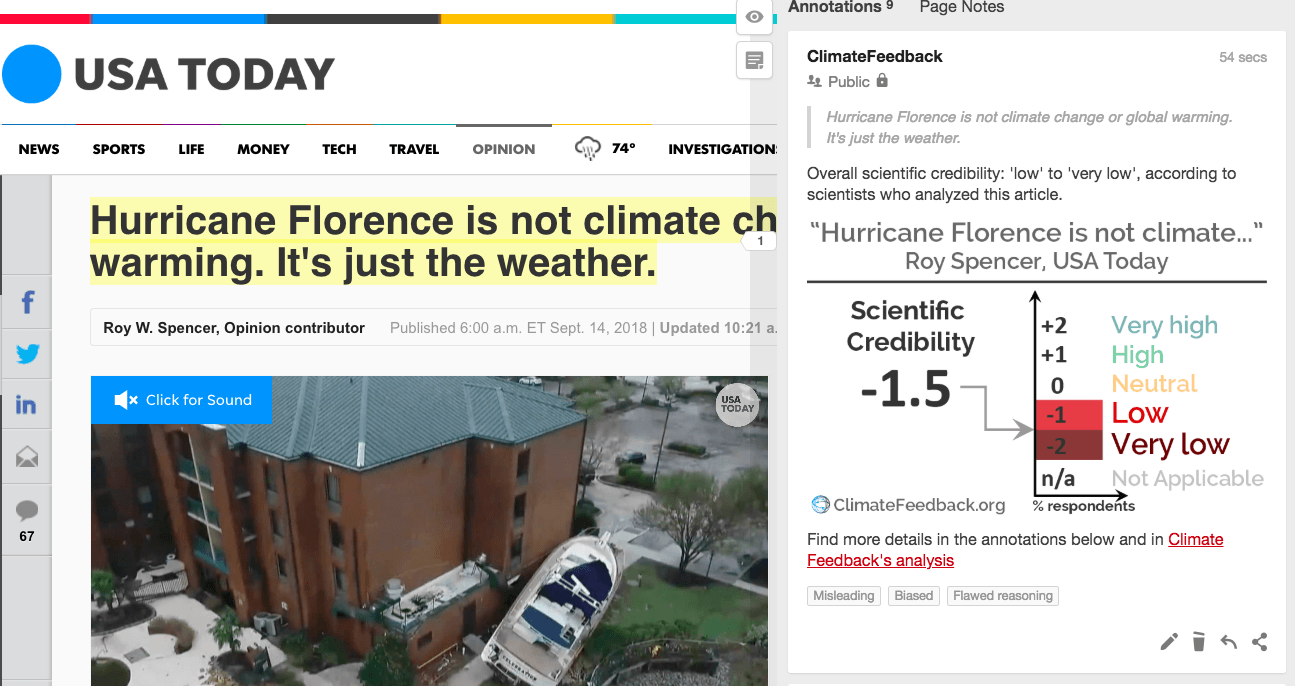- Climate
Here’s what we know about how climate change impacts hurricanes – and what we don’t
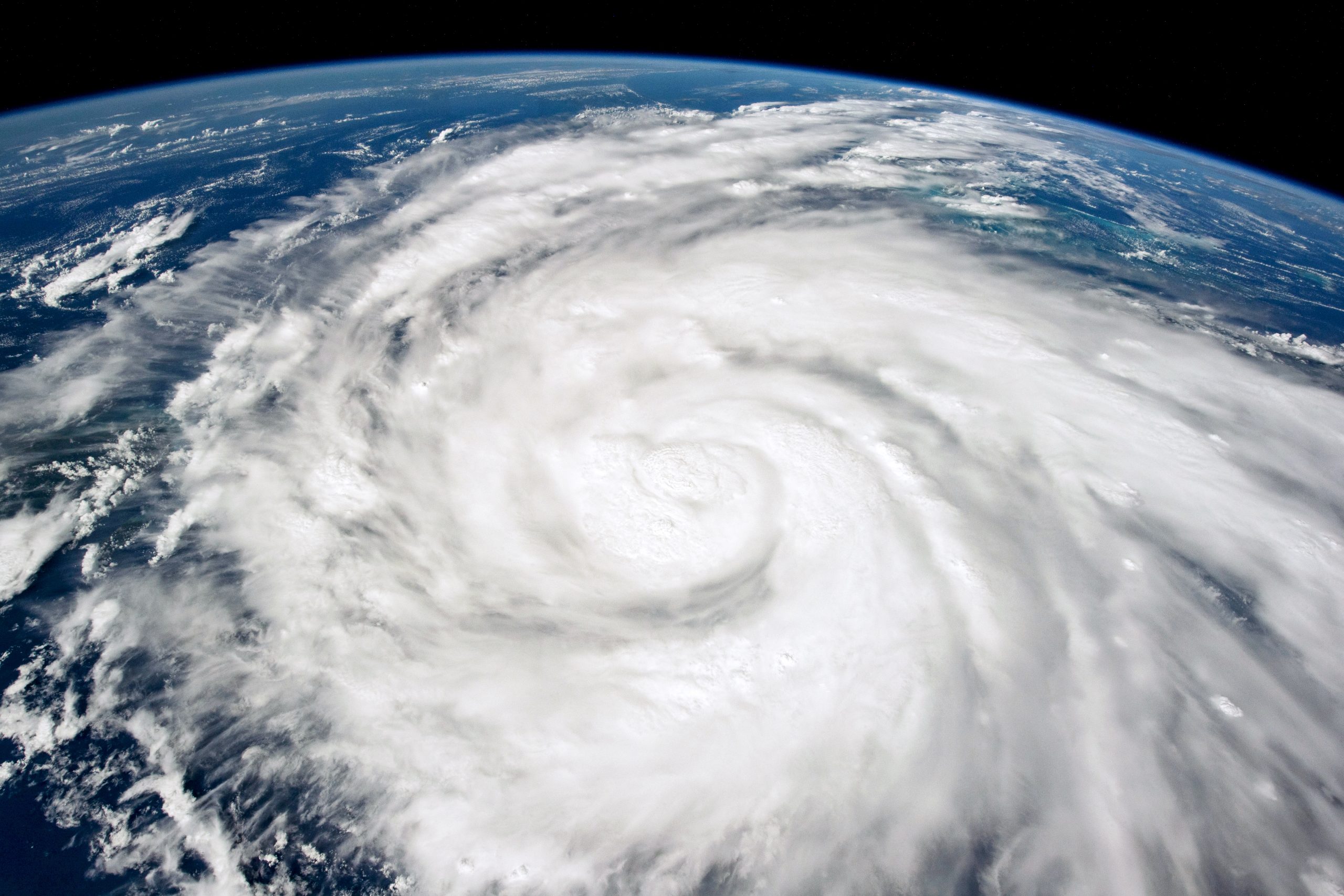
There are some aspects of climate science that are clear-cut. It is, for instance, “unequivocal that human influence has warmed the atmosphere, ocean and land,” according to the Intergovernmental Panel on Climate Change.[1] As human activities emit greenhouse gases into the atmosphere, those greenhouse gas concentrations have increased, causing global temperatures to rise.
But it’s harder to draw clear, confident conclusions about the overall impacts of climate change on some global phenomena – including hurricanes.
“We don’t have a highly confident attribution to humans for tropical cyclones like we do for global mean temperature or sea level rise – things where we have a clear signal,” said Tom Knutson, senior scientist at NOAA’s Geophysical Fluid Dynamics Laboratory.
The complex nature of the relationship between hurricanes and climate change has sparked claims that, because science has not uncovered a link between climate change and rising hurricane numbers, for instance, climate change does not have an effect on hurricanes at all. These claims have been particularly frequent in the aftermath of Hurricane Ian, a Category 4 hurricane that caused major destruction and led to the deaths of over 100 people in Cuba, Florida and other parts of the Southeast U.S.
In fact, scientists are confident about some hurricane trends. There is a clear link between climate change and increased rainfall in hurricanes, for instance, and globally, hurricane intensities are projected to increase as the planet warms. And scientists are working to answer questions about the many ways climate change could impact hurricanes, now and in the future.
Here’s what scientists know so far about how climate change interacts with the components of a hurricane:
Rainfall
According to the National Oceanic and Atmospheric Administration, as climate change progresses, hurricanes are likely to get rainier – and, according to some research, have already done so. That’s because, the warmer the air gets, the more water vapor it can hold.
“There is a very strong consensus among climate scientists that hurricane rainfall will increase as the climate warms,” Kerry Emanuel, Professor Emeritus of Atmospheric Science at MIT, said in an email.
Already, some studies have concluded that a warmer atmosphere contributed to increased rainfall levels in hurricanes: Two studies, for instance, examined rainfall in Hurricane Harvey, which hit Texas and Louisiana in 2017, and determined that it was likely that climate change increased the storm’s rainfall.[2-3] A 2021 study looked at tropical cyclones over a 19-year period and found an increase in rainfall rates of about 1.3% per year, which the authors theorized was due to warmer sea surface temperatures and the associated increase in water vapor over the oceans.[4] And a 2022 study found that, during the 2020 Atlantic hurricane season, climate change increased extreme 3-hourly hurricane rainfall rates by 11% and 3-day accumulated hurricane rainfall amounts by 8%.[5]
Figure 1: Graph of global ocean heat content change in the upper 2,000 meters of the ocean, showing the monthly average by year as compared to the annual average, for 1955–2019. Warmer seas may be helping fuel rainier hurricanes. Courtesy of NOAA NCEI and IAP.
Increased risk of extreme rainfall is, in fact, something scientists are confident of in general as climate warms – not just in relation to hurricanes. Climate change is “projected to further intensify the global water cycle,” according to the IPCC, intensifying “very wet and very dry weather and climate events and seasons, with implications for flooding or drought.”[1]
Increasingly rainy storms are dangerous because they can lead to higher risk of flooding and landslides. In fact, most hurricane deaths in the United States are related to water.[6]
Hurricane Intensity
Globally, the fraction of more intense hurricane occurrence – a three on the Saffir-Simpson scale or higher – has been increasing over the last four decades.[7] Between 1979 and 2017, the probability of a hurricane observation being at “major strength” wind speeds – 111 miles per hour or higher – increased by approximately 15 percent. Scientists aren’t sure how much of that increase can be attributed to human-caused warming and how much is natural. But, Knutson said, “we’re getting closer to being able to say there’s at least some human imprint” in this increasing intensification trend.
One of the reasons it’s tricky for scientists to confidently identify changes in Atlantic hurricane intensity – and frequency, as we discuss later on – is that pre-satellite data on hurricanes is limited. Since the advent of satellites, around the mid-1960s, scientists have been able to keep a good watch on Atlantic hurricane activity. In the pre-satellite era, however “we think there were storms that occurred that never got into our databases,” Knutson said. Scientists have tried to estimate how high that undercount may be using ship track data, but that estimate contains considerable uncertainties.
Because of that lack of data, “it’s difficult to say anything confident about trends in tropical cyclone intensity except for trends over the last few decades,” said Kevin Walsh, professorial fellow at the School of Geography, Earth and Atmospheric Sciences at the University of Melbourne. “This is probably too short a period of time to say with great confidence that these trends are caused by global warming.”
In the Atlantic, research has projected that the maximum wind speeds of tropical storms and hurricanes will increase by about 3% for a two degree Celsius global warming scenario. This may sound like a small amount, but it leads to a greater potential for damage: “If we assume that wind damage increases at the wind speed cubed, this relatively small 3% increase in wind speed leads to a ~10% increase in damage potential,” Knutson and colleague Christopher Landsea, chief of the Tropical Analysis and Forecast Branch at the National Weather Service’s National Hurricane Center, wrote in a June 2022 blog post.
There are “good theoretical reasons” why increases in global temperature may lead to more intense hurricanes, Walsh said. “The heat engine that fuels a tropical cyclone depends on the temperature difference between the sea surface and the upper troposphere, and this is predicted to increase as the sea gets warmer, giving stronger tropical cyclones,” he said.
The lack of good quality pre-satellite data also makes it difficult to make any assumptions about hurricanes in the pre-industrial era. After Hurricane Ian hit Florida in September, James Taylor, the president of the Heartland Institute, claimed in a Fox News article that hurricanes like Ian “were much more frequent and severe before coal power plants and SUVs.” In fact, “we know very little about hurricanes in pre-industrial times,” Emanuel said. Hurricanes “are likely to have been around for as long as there has been an atmosphere with water vapor,” said James Elsner, professor in the Department of Geography, Florida State University. “There are pre-historical records of over-wash deposits from hurricanes back through the mid-Holocene (~6K years ago). These records provide no evidence that hurricanes were more frequent or stronger in pre-industrial times”. Taylor’ claim is thus baseless.
Rapid intensification
Hurricanes that intensify quickly – like Hurricane Ian in late September – can lead to “disastrous scenarios when coastal areas are not given adequate notice to evacuate and prepare for an extremely intense TC [tropical cyclone].[9] A 2019 study found “significant increases in tropical cyclone intensification rates in the Atlantic basin”. That finding could be an emerging human-caused impact on hurricanes, NOAA notes.
“In a general sense, greenhouse warming led to more rapid intensification in the model we were studying,” Knutson said.
Hurricane frequency and beyond
So far, scientists have not found that climate change corresponds with an increased or decreased number of yearly hurricanes. Though the proportion of hurricanes that reach Category 4 and 5 levels is projected to increase as the climate warms, NOAA notes that “there is less confidence in future projections of the global number of Category 4 and 5 storms, since most modeling studies project a decrease (or little change) in the global frequency of all tropical cyclones combined.” One 2022 study found that, since pre-industrial times, there has been a 13% decrease in tropical cyclone numbers globally.[8]
“As the planet warms further, we have no confidence in any prediction of what that number will do,” Adam H. Sobel, a professor at Columbia University’s Lamont-Doherty Earth Observatory, wrote in CNN about the total annual number of hurricanes. “Many models suggest the number will actually go down, but others say it will go up, and we don’t know which is right.”
Even a decrease in hurricane numbers per year would not necessarily mean less impact from hurricanes, particularly if hurricane intensity does increase, as the strongest hurricanes tend to do the most damage. But the uncertainty surrounding how hurricane frequency could change as the climate warms has been brought up in claims seeking to undermine climate change’s impact on hurricanes. These claims are examples of straw man arguments: noting that climate change may not lead to a higher number of hurricanes in the future does not mean that climate change has had – or will have – no impact on hurricanes at all, as this article has shown.
Aside from rainfall and intensity, there are other ways that climate change may be impacting hurricanes: Some research has shown, for instance, that climate change may result in changes to hurricane tracks, with an increasing fraction of hurricanes in the Atlantic making U.S. landfall.[10]
“There may be some gotchas in the system, one way or the other,” Knutson said. “It’s a complicated field. Just because we’re not talking about changes in hurricane size and hurricane tracks, that doesn’t mean they won’t happen with climate change – we’re just saying it’s premature to say very much about them with confidence.”
References
- [1] IPCC, 2021: Climate Change 2021: The Physical Science Basis. Contribution of Working Group I to the Sixth Assessment Report of the Intergovernmental Panel on Climate Change
- [2] Van Oldenborgh et al. (2017). Attribution of extreme rainfall from Hurricane Harvey, August 2017. Environmental Research Letters
- [3] Risser et al. (2017) Attributable Human-Induced Changes in the Likelihood and Magnitude of the Observed Extreme Precipitation during Hurricane Harvey. Geophysical Research Letters.
- [4] Guzman et al. (2021) Global increase in tropical cyclone rain rate. Nature Communications
- [5] Reed et al. (2022) Attribution of 2020 hurricane season extreme rainfall to human-induced climate change. Nature Communications.
- [6] Edward N. Rappaport (2014) Fatalities in the United States from Atlantic Tropical Cyclones: New Data and Interpretation. Bulletin of the American Meteorological Society.
- [7] Kossin et al (2020) Global increase in major tropical cyclone exceedance probability over the past four decades. Proceedings of the National Academy of Sciences.
- [8] Chand et al. (2022) Declining tropical cyclone frequency under global warming. Nature Climate Change.
- [9] Bhatia et al. (2019) Increases in tropical cyclone intensification rates. Nature Communications.
- [10] Knutson et al (2022). Dynamical downscaling projections of late twenty-first-century U.S. landfalling hurricane activity. Climatic Change.

